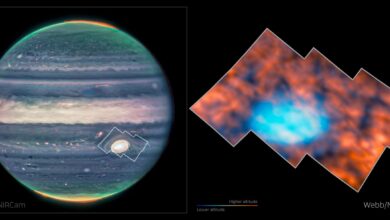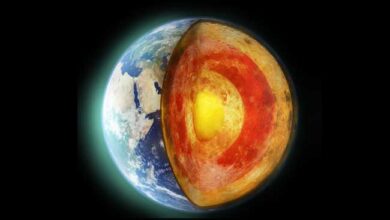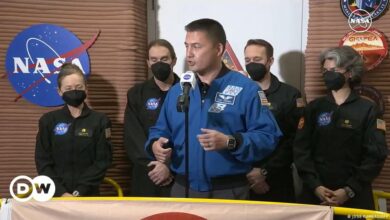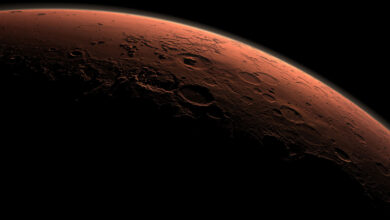Webb Space Telescope Captures Stunning Quasar-galaxy Merger in the Distant Universe
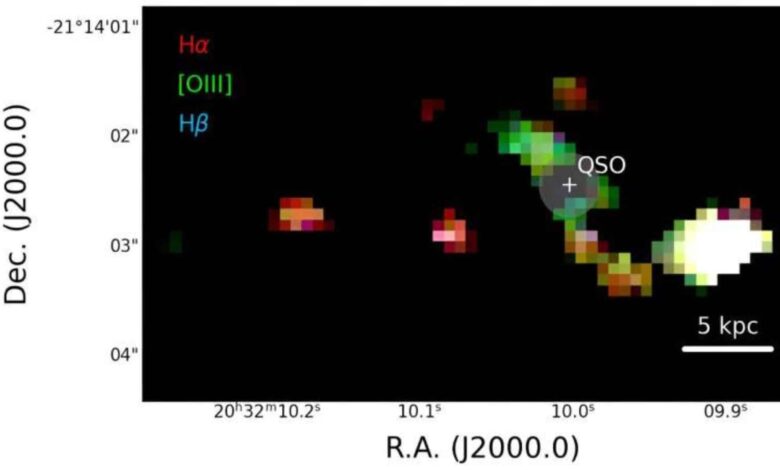
[ad_1]
An international research team, led by the Italian National Institute for Astrophysics (INAF), has utilized the James Webb Space Telescope (JWST) to capture an extraordinary event in the distant universe: the dramatic interaction between a quasar and two massive satellite galaxies within the PJ308-21 system.
This remarkable discovery provides new insights into the growth of galaxies in the early universe, offering a glimpse into the processes that shaped the cosmos during its formative years.
Observing the Quasar-galaxy Interaction
In September 2022, the JWST’s Near-Infrared Spectrograph (NIRSpec) observed the PJ308-21 system, revealing unprecedented details about this quasar-galaxy merger. The quasar, located in a galaxy that existed when the universe was less than a billion years old, was observed with remarkable precision.

The NIRSpec instrument captured the quasar’s spectrum with an uncertainty of less than 1% per pixel, allowing researchers to study the physical properties of the gas within the quasar’s host galaxy and its companion galaxies. This high level of detail has provided invaluable data that helps to understand the early stages of galaxy formation and the role of quasars in this process.
High Metallicity and Star Formation
The host galaxy of PJ308-21 exhibits high metallicity and photoionization conditions typical of an active galactic nucleus (AGN), while one of the satellite galaxies shows low metallicity and star formation-induced photoionization. The second satellite galaxy, partially photoionized by the quasar, also displays high metallicity.
These observations confirm that both the quasar and the surrounding galaxies are highly evolved in terms of mass and metal enrichment and are undergoing constant growth. Roberto Decarli, a researcher at INAF and the study’s lead author, stated, “Our study reveals that both the black holes at the center of high-redshift quasars and the galaxies that host them undergo extremely efficient and tumultuous growth already in the first billion years of cosmic history, aided by the rich galactic environment in which these sources form.”
Innovative Techniques for Detailed Analysis
The observations were conducted as part of one of nine Italian-led projects in the first observation cycle of the JWST. The team employed integral field spectroscopy, allowing them to observe the spectrum of the entire optical band for each image pixel.
This technique enabled the study of various gas tracers and the properties of the ionized interstellar medium, including metallicity, dust obscuration, electron density and temperature, and star formation rate.
Federica Loiacono, an astrophysicist and research fellow at INAF, emphasized the significance of these observations: “Thanks to NIRSpec, for the first time we can study in the PJ308-21 system the optical band, rich in precious diagnostic data on properties of the gas near the black hole in the galaxy hosting the quasar and in the surrounding galaxies. We can see, for example, the emission of hydrogen atoms and compare it with the chemical elements produced by the stars to establish how rich the gas in galaxies is in metals.”
Insights from Advanced Data Analysis
The data collected through these observations have allowed researchers to delve deeply into the conditions and processes occurring in these early galaxies. By studying the emission lines of different elements, the team was able to determine the properties of the ionized interstellar medium, such as the source and intensity of the photoionizing radiation, the levels of metallicity, and the density and temperature of electrons.
This detailed analysis provides a clearer picture of the physical conditions in the galaxies and how they interact with the quasar at their center. “The experience in reducing and calibrating these data, some of the first collected with NIRSpec in integral field spectroscopy mode, has ensured a strategic advantage for the Italian community in managing similar data from other programs,” said Loiacono.
Implications for Cosmic History
The ability to study the chemical composition and physical properties of galaxies in such detail has profound implications for our understanding of cosmic history and the chemical evolution of galaxies. The data collected by the JWST allows astronomers to map the enrichment of metals in galaxies observed when the universe was still in its infancy.
Roberto Decarli noted, “Until a couple of years ago, data on the enrichment of metals (essential for understanding the chemical evolution of galaxies) were almost beyond our reach, especially at these distances. Now we can map them in detail with just a few hours of observation, even in galaxies observed when the universe was in its infancy.”
This ability to measure and analyze the chemical properties of early galaxies opens new avenues for understanding the processes that governed their formation and evolution.
The Transformative Impact of the James Webb Space Telescope
The findings from this study not only shed light on the early growth and development of galaxies and black holes but also demonstrate the transformative impact of the James Webb Space Telescope’s advanced capabilities.
The JWST’s sensitivity in the near and mid-infrared spectra allows for unprecedented precision in observing distant objects, making it possible to gather detailed data that were previously inaccessible. “The work represented a real ’emotional rollercoaster,’ with the need to develop innovative solutions to overcome the initial difficulties in data reduction,” Decarli shared, highlighting the challenges and triumphs of the research process.
As the JWST continues to observe the universe, it is expected to unveil further groundbreaking discoveries that will deepen our understanding of the cosmos and the fundamental processes that shaped its evolution.
[ad_2]
Source link


